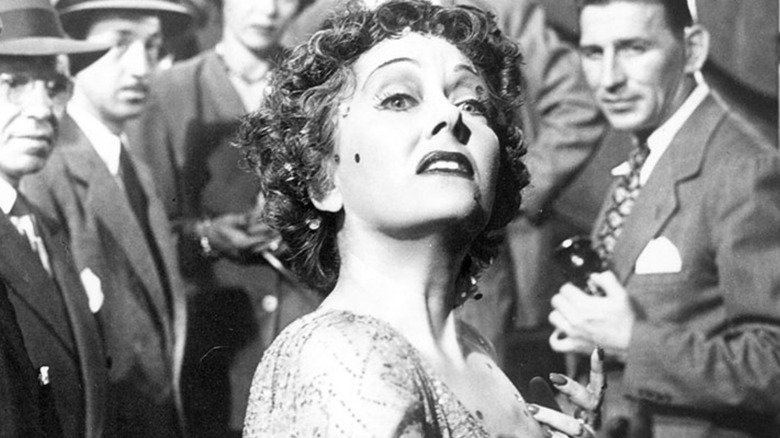
The hard-boiled detective, the femme fatale, the patsy, and the moll — by this point, the main ingredients of film noir might be considered cliches, but when its tropes are fully indulged, noir still leads to a great time at the movies. Frequently utilizing stunning black-and-white cinematography that emphasizes gorgeous lighting, shadows, silhouettes, and stark contrasts, noir films reveal the dark and seedy underbelly of post-war America (or, in some cases, Vienna, Tokyo, or seaside English towns).
As you'll see, the late 1940s were the golden age of noir. In addition, over half of the movies on this list are based on great pieces of pulp fiction by writers like Raymond Chandler, James M. Cain, Dorothy B. Hughes, Graham Greene, and Ernest Hemingway, proving that, if you have compelling characters and strong source material, you usually get a good movie out of it. Of course, it also helps if you're working with directors like Billy Wilder, Carol Reed, Akira Kurosawa, Jacques Tourneur, Michael Curtiz, and Howard Hawks.
So, shine your gumshoes, tip your fedora, light your cigarette, slug a shot of whiskey, and prepare to sink into a world of corruption and seduction, for these are the 14 best noirs, ranked.
The Big Sleep
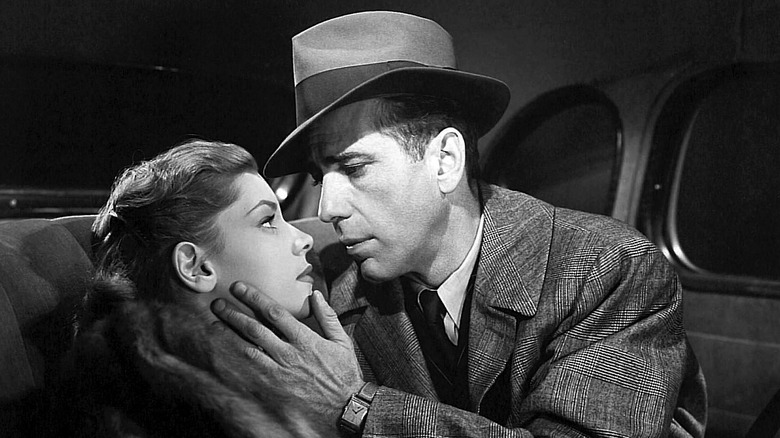
Humphrey Bogart playing Philip Marlowe, Chandler's iconic private eye, is as classic as noir can get. In this adaptation of Raymond Chandler's most famous movie, Bogie and Lauren Bacall shine as Marlowe and Vivian Sternwood, the daughter of the man who hires him, respectively. While the convoluted plotting works better in the book than on film, "The Big Sleep" really comes alive during their shared scenes, with their obvious chemistry bringing the heat. Marlowe feels like the role that Bogart was born to play, but it's Bacall who brings out the best in him.
The opening of the film, in which Charles Waldron's dying General Sternwood talks about the hothouse lilies warming his blood, is a highlight, as is John Ridgely as Marlowe's foil, the racketeer Eddie Mars. Martha Vickers as the sexually provocative Carmen Sternwood also pushes boundaries, as much as was possible at the time.
The dialogue in a Chandler adaptation is always going to its biggest selling point, and much of the classic noir tropes come from this film. Director Howard Hawks is better known for his screwball comedies and westerns, but his foray into noir helped establish the foundation that later productions built on.
Stray Dog
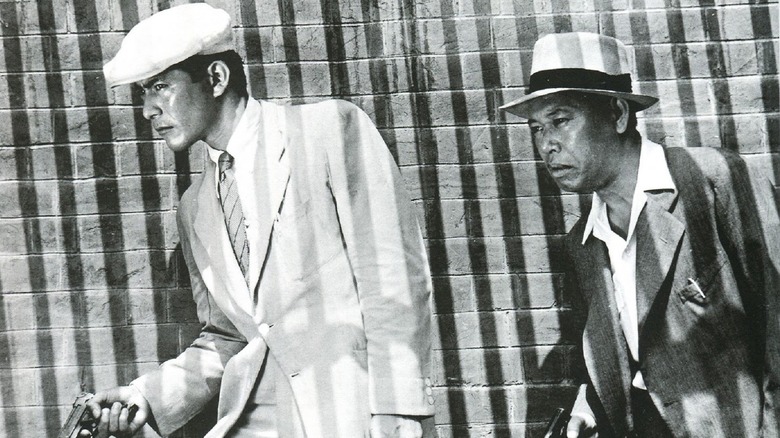
While he is of course best-known for his samurai films, Akira Kurosawa also made several noirs (including two in the 1960s) that rank among his best work. "Stray Dog" is set in a sweltering post-war Tokyo and sees two mismatched detectives team up to solve a crime, a trope we will see return in "Memories of Murder," as well as a whole raft of Hollywood films, such as "Lethal Weapon."
The duo is played by regular Kurosawa collaborators Toshiro Mifune and Takashi Shimura. Detective Murakami (Mifune) has his gun stolen on a bus and spends the rest of the film trying to track it down, feeling emasculated and wracked with guilt about the future crimes it becomes involved in.
Kurosawa shot on location in the real war-ravaged streets, and while the film was only made a few years after 1945, there is some sensitive handling of traumatized men trying to regain their lives after the war. The opening close-up shots of Murakami on the bus are brilliantly claustrophobic, with the narration telling us that "the air was so thick, he felt woozy." The crowd shots at a baseball game are also expertly handled. Even now, "Stray Dog" feels hugely ahead of its time.
Nightmare Alley
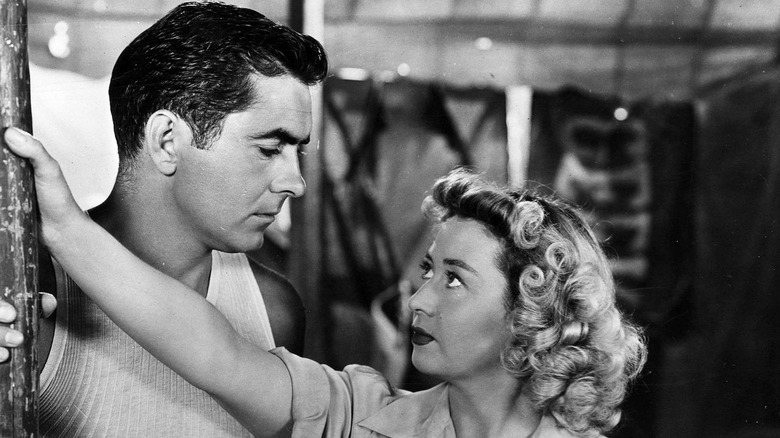
This film has been the subject of renewed interest recently, due to the fact that Guillermo del Toro's remake comes out in 2021. In this 1947 adaptation, Tyrone Power takes on the role of his career as an ambitious carny who achieves lofty heights before a spectacular fall brought on by his own hubris.
"Nightmare Alley" is a complex film that has many different sections. The early part of the film is set at a carnival, focusing on Stan (Power) and his professional (and personal) relationship with his mentor, the clairvoyant Zeena (Joan Blondell). He then moves onto the naive Molly (Colleen Gray), whom he marries before taking what he's learned from Zeena and becoming a successful nightclub act.
But Stan is wracked with guilt for the part he played in Zeena's husband's death and visits a psychologist (Helen Walker). They strike up a deal to use the information she has gathered about her patients to exploit people. There is an extraordinary scene in which Stan convinces Molly to pose as the dead love of a grief-wracked older gentleman.
Power is sensational in the central part, and the three women in supporting roles are also extraordinary. The recurring role of the carnival "geek" also makes for a heartbreaking way to bookend the narrative.
Lady In The Lake
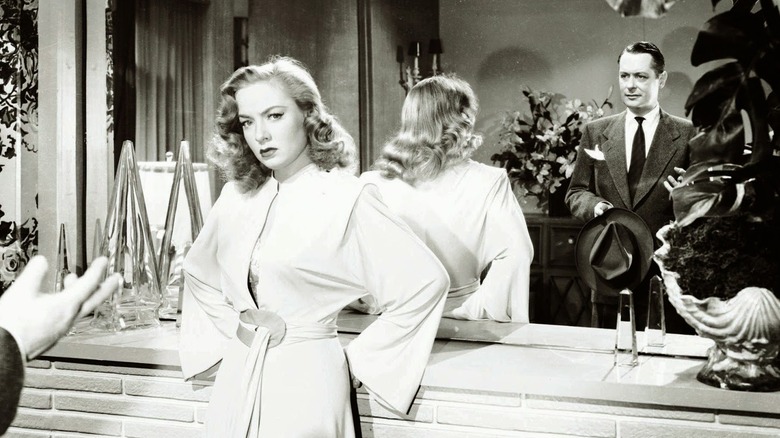
Considered by most to be a failed experiment, Robert Montgomery's adaptation of Chandler's "Lady in the Lake" is so weird that I can't help but have huge affection for it. If you're not enticed by the tagline — "YOU and Robert Montgomery solve a murder mystery together!" — then you must not like fun (or Choose Your Own Adventure books). It's also a Christmas film!
Montgomery directs and stars as Philip Marlowe, but barely appears on screen, due to the film being shot from his point of view. This means that everyone else's performances, including the deliciously melodramatic Audrey Totter as Miss Fromsett, are pitched directly at the camera. It takes some getting used to, but lean into it and you'll have a good time. Totter's eyebrow work alone is worth the price of admission.
One of the other unusual aspects of this movie is that the only score is a sparingly-used vocal chorus. The film is also surprisingly romantic, given that Totter has to make love to the camera throughout. This adaptation doesn't work for everyone, but I love bold, risky, unique approaches to films like this. "Lady in the Lake" is a very strange entry into the noir canon, but one that's definitely worth watching at least once.
A Kiss Before Dying
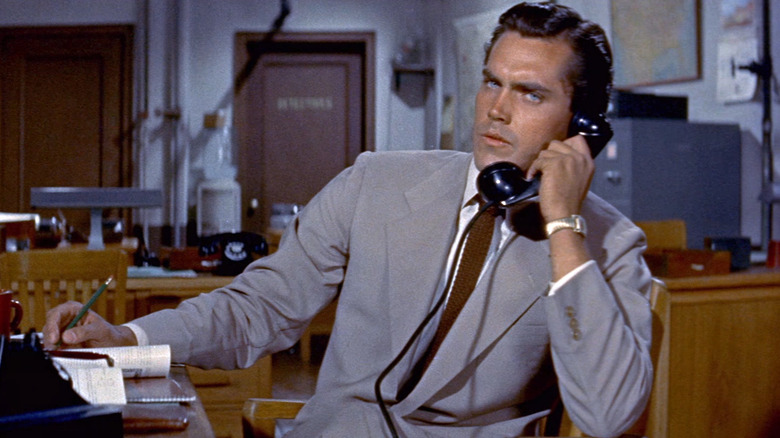
"A Kiss Before Dying" is the odd one out on this list for three reasons: It's the only color movie, it's set in Tucson, Arizona, and it's from the mid-'50s. And yet, I had to include "A Kiss Before Dying" here. It has a bold plot that takes some unbelievable twists and turns, and centers on a truly memorable villain.
Robert Wagner plays Bud Corliss, a cold and calculating university student who is after the fortune of Leo Kingship (George Macready), a mining mogul. First, Bud woos Kingship's daughter Dorothy (Joanne Woodward), but in a bold move for a film of the time, she becomes pregnant. Bud worries that she'll be disinherited, and so agrees to meet her at the office where she believes they'll be married and pushes her off the roof instead, making it look like a suicide.
Bud quickly targets Dorothy's younger sister, Ellen (Virginia Leith), who is unaware that he had a relationship with Dorothy. Jeffrey Hunter appears as Gordon Grant, a man who becomes suspicious of Dorothy's death and starts to investigate the matter, leading to an exciting, action-packed finale that takes place at the Kingship mine. Many of the best noirs focus on twisted, villainous individuals; even among the most depraved, Bud stands out as one of the worst.
The Killers
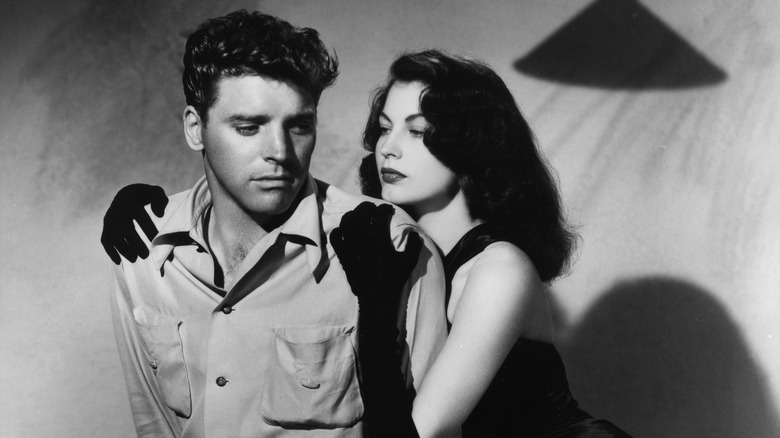
You know you're about to get into the juicy stuff when someone drifts off with a wistful "It all started when..." Well, we get that several times here, as the people who knew "the Swede" (a young and very beautiful Burt Lancaster) reminisce about his life after he's shot by two hitmen. Once again, a dope is undone by his love of a beautiful woman — here, the radiant Kitty Collins (Ava Gardner). Lancaster and Gardner make for one of the hottest ever doomed couples at the center of a noir, and for that reason alone, it deserves its place on this list.
The only flaw of "The Killers" is that the extremely compelling Lancaster doesn't get enough screen time, due to being, well, dead. But he makes enough of what he has to give us a reason to care about the investigation into his death. Edmond O'Brien plays Reardon, the dogged insurance investigator who can't let the case go. Like many noirs, "The Killers" has a dynamite opening, with the killers arriving at a diner and quickly changing the atmosphere to frosty. Also? "Don't ask a dying man to lie his soul into hell" is a killer (ahem) final line.
Out Of The Past
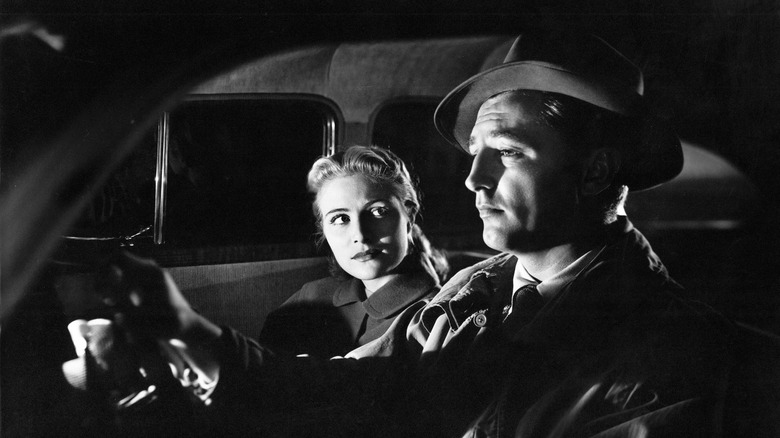
Another noir with a great framing device, "Out of the Past" is about a man trying to escape his old life by changing his name and moving to a one-horse town. Like many noir protagonists, Jeff (Robert Mitchum) is undone by his love of a low-down, no-good, double-crossing broad — in this case, Kathie (Jane Greer).
There's a great juxtaposition between Jeff's old life, which revolved around gangster Whit Stirling (Kirk Douglas), and his new one with his wholesome girlfriend, Ann (Virginia Huston), and a kid (Dickie Moore) who helps him run the garage where he's trying to make an honest living. When these two lives start to bleed into one another, trouble starts.
Mitchum is as close to a perfect noir vessel as it's possible to be — his floppy hair, hooded eyes, and large, gangly frame just work as a man torn between the lure of small-town America and the more enticing, exciting prospects of a life of crime. It's extraordinary that he can be so perfect here and play the embodiment of evil in "The Night of the Hunter." Like all the best noirs, "Out of the Past" also has a stupendous ending.
The Postman Always Rings Twice
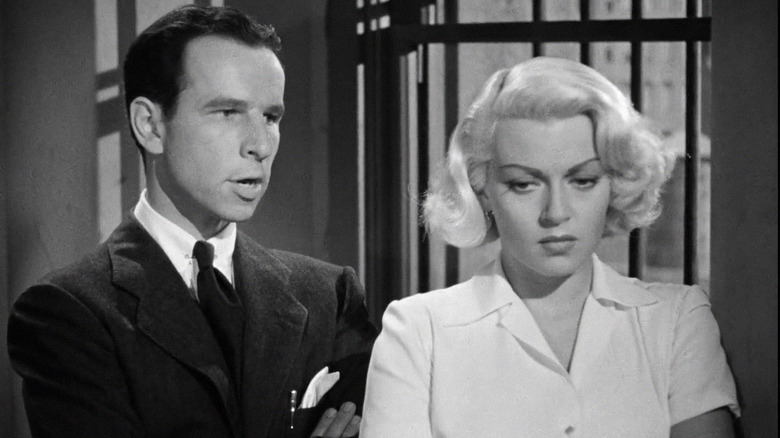
Once Lana Turner makes that entrance, you know it's curtains for poor John Garfield. "The Postman Always Rings Twice" is an unpredictable ride that you think is about one thing, but ends up quite different. The first half involves Cora (Turner) and Frank (Garfield) plotting to murder Cora's older husband, Nick. So far, very "Double Indemnity."
But at the point at which most noirs would end — when the couple gets caught — this movie still has nearly half its runtime to go. The real stars of the show are two lawyers, DA Kyle Sackett (Leon Ames, who is also in "Lady in the Lake") and Arthur Keats (Hume Cronyn), who somehow shake it so that the lovers go free. And then the movie keeps going...
"Postman" strikes the balance between being extremely twisty while also being easy and satisfying to follow. No one really fits into the prototypical noir archetypes, either. Lana Turner is luminous in her white silk outfits (something later replicated by Kathleen Turner in "Body Heat") and the plot is propulsive, with a deliciously ironic ending.
The Third Man
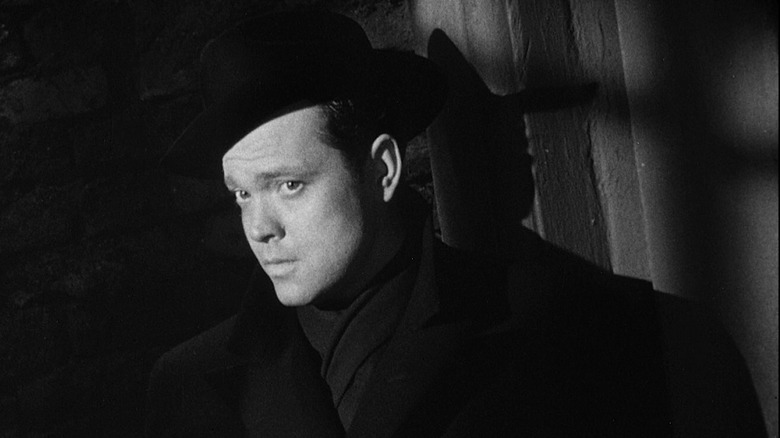
Not many noirs are known for a signature tune, but "The Third Man" features one of the most famous pieces of film music ever written. It's also easy to forget that Orson Welles' Harry Lime only has a small amount of screen time, because his presence is felt so heavily throughout. He both makes an all-time great entrance, and also gets an all-time great death scene.
Joseph Cotten, who made such a sinister impression in Hitchcock's "Shadow of a Doubt," plays the everyman who carries the film, aided by Trevor Howard's Major Calloway. They spend the film pursuing the enigmatic Lime as he slides like a slippery eel through the alleyways and sewers. Other than his entrance and exit, Lime gets just one other iconic scene, which takes place on a Ferris wheel and includes his famous line about the cuckoo clock.
But it is Anton Karas' music and Robert Krasker's cinematography that are the stars of the show. The Dutch angles, the silhouettes, and the shadows are absolutely stunning throughout. The film is relentlessly cynical and bleak, capturing the brief moment between the end of World War II and the start of the Cold War. It's another rare example of a non-American noir that is so flawless that it must be enveloped into the canon of all-time great noirs.
Mildred Pierce
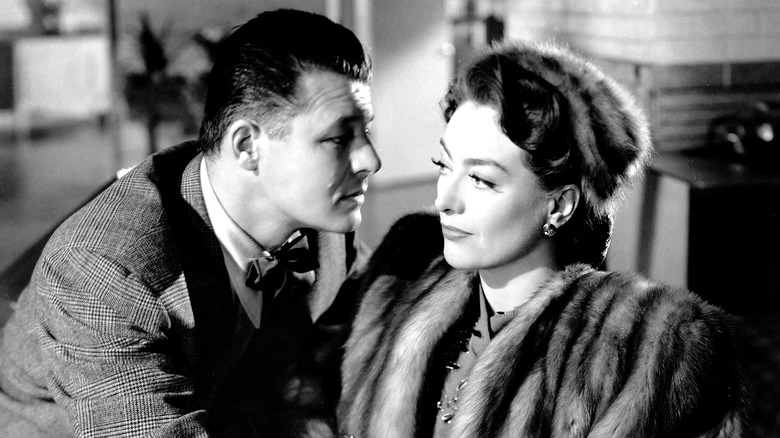
If there's one thing that noir loves, it's a cold open. This one has a doozy. Shots are fired, a man goes down, and his last word is "Mildred." In addition, the scene near the start where Mildred (Joan Crawford) invites Willy (Jack Carson) back to her beach house to make a patsy of him is one of the most gorgeously shot scenes in noir; the light and shadows, angles, framing, and blocking are all exquisite.
The other thing that noir loves is a framing device, and the one in "Mildred Pierce" starts a full 20 minutes in, as Mildred starts to regale the police with her tale — cue the flashback. The femme fatale of the piece comes from an unexpected source: Mildred's 16-year-old daughter Veda (Ann Blyth), who has her mother over a barrel.
Considering that much of the film is a domestic drama concerning Mildred's pursuits as a successful businesswoman, it's remarkable how "Mildred Pierce" still manages to have the look of a noir throughout. With Michael Curtiz at the helm, it's no wonder that it's phenomenally directed. Crawford acts the hell out of the title role, while being beautifully shot by Ernest Haller at all times. "Mildred Pierce" is a cracking story (originally written by James M. Cain) that is enhanced by Curtiz's direction — it's a genuine masterpiece.
Brighton Rock
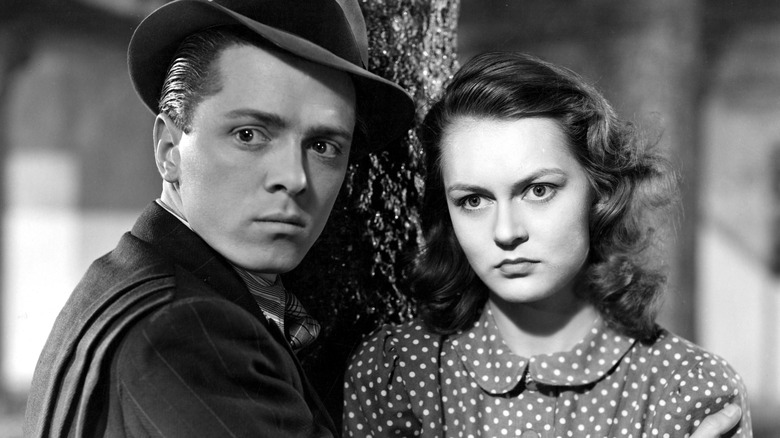
If you haven't seen Richard Attenborough in the seedy British noir "Brighton Rock," you are in for a revelation. Forget the kindly grandfather in "Jurassic Park." Here, Attenborough delivers an all-time great performance as the sociopathic Pinkie Brown, a murderous teenage gangster who will go to any lengths to save his own skin, no matter who gets in his way.
One of these impediments is the wonderful Hermione Baddeley as Ida, a woman who encountered Pinkie's victim and is determined to avenge him. Another witness who needs to be dealt with is the sweet and innocent Rose; Pinkie realizes that, if he marries her, she cannot testify against him.
There are many highlights in this film, and director John Boulting and cinematographer Harry Waxman make sure they leave a lasting impression: Pinkie using the cover of a "ghost train" to perform a murder; Pinkie pushing a man off a balcony, the aftermath reflected in a skylight; Pinkie revealing his true feelings about his new bride on a recording — "I hate you. You make me sick" — while her angelic face is right there, outside the booth. Not many noirs from outside the U.S. rank among the greats, but this is certainly one of them.
Sunset Boulevard
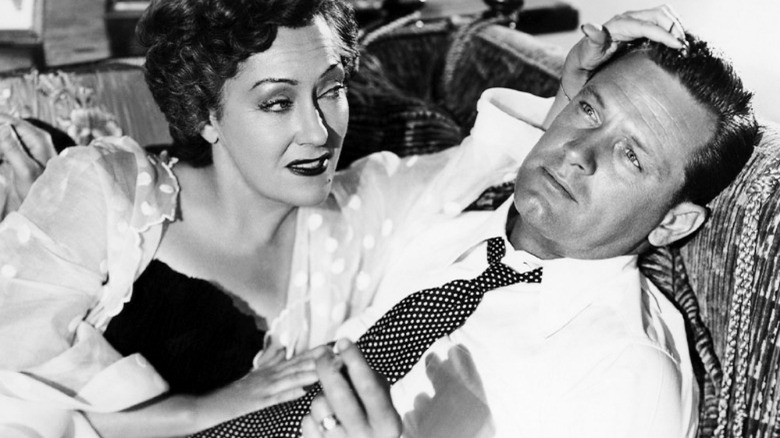
Gloria Swanson delivers one of the greatest performances of all time as Norma Desmond, a symbol of the faded glamor and broken dreams that settle in once the spotlight fades and fame fizzles. "Sunset Boulevard" also features a great noir trope, as a dead guy narrates the circumstances that led to his death; the film opens not only with a corpse in a pool, but with a deceased chimpanzee who needs an appropriately-sized coffin.
As Joe, an aspiring screenwriter who becomes a kind of captive gigolo for the vulnerable Desmond, William Holden is a great foil for Swanson. Norma lives in a full-on Gothic castle, complete with a windy pipe organ and a manservant named Max. Joe's narration is filled with incredible writing; lines like "She was still waving proudly to a parade that had long since passed her by" are classic noir.
Having real-life figures such as Cecil B. DeMille, Hedda Hopper, and Buster Keaton appear (in addition to references to many more directors, writers, and stars) fully soaks the film in Hollywood lore. "Sunset Boulevard" is a fantastic noir because it has that pulsing sense of inevitability. Joe's everyman is led to his doom, and Desmond is up there with Blanche DuBois as an all-time great character for a woman of a certain age.
In A Lonely Place
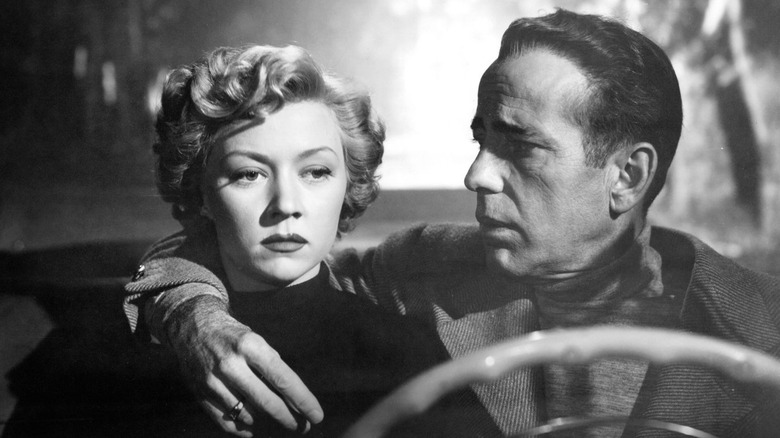
As with "Brighton Rock," "A Kiss Before Dying," and maybe "Nightmare Alley," the main character here is also the villain of the piece — or is he? Both "Brighton Rock" and "In a Lonely Place" are based on exceptional books that take you into the mind of sociopathic killers. However, "In a Lonely Place" differs substantially from Dorothy B. Hughes' book, making Dix Steele (Humphrey Bogart) more complex, and the audience is less sure if he is evil or not as a result. The movie is also about Hollywood in a way that the book is not.
The movie is still unusual in that it centers on such a dark and violent character, with the big star taking on this role rather than that of the good cop Brub Nicolai (Frank Lovejoy). Laurel (Gloria Grahame) is the innocent woman who becomes embroiled with a dangerous man, and then becomes too scared to leave him.
Grahame's performance is all the more extraordinary, given that she was separating from her husband, the film's director, Nicholas Ray, during filming. Check out the 2018 movie "Film Stars Don't Die in Liverpool" for a fascinating companion piece. Bogie also delivers one of his best performances as an unpredictable wild card who can explode into rage at any moment.
Double Indemnity
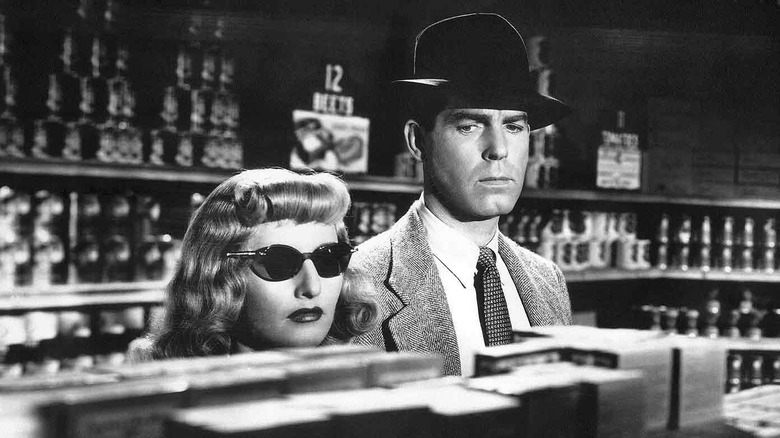
It's a tough call, but Barbara Stanwyck, who was also a gifted comedienne, may have created the ultimate femme fatale in Phyllis Dietrichson. "Double Indemnity" is the third movie on this list based on a novel by James M. Cain (the others being "Mildred Pierce" and "The Postman Always Rings Twice"). Fred MacMurray plays Walter Neff, the patsy in Dietrichson's scheme to murder her husband and claim the insurance money.
It works very well that McMurray was clearly foot taller than Stanwyck, while she is the one holding the power and pulling the strings. Their frequent rendezvous in a local market, where Phyllis wears dark glasses and they attempt to communicate without looking at each other, are brilliant. Their initial meetings in the Dietrichsons' fabulous Spanish colonial home are a masterclass in flirtation and seduction. MacMurray walks the tightrope between being an intelligent man who comes up with ingenious schemes and the doomed fool who is hoodwinked, bamboozled, and led astray by an ambitious and ruthless woman.
The top three films on this list are all set in Los Angeles. As Thom Anderson says of "Double Indemnity" in the wonderful documentary "Los Angeles Plays Itself," "You could charge L.A. as a co-conspirator in the crimes this movie relates." Los Angeles is the ultimate noir setting, and "Double Indemnity" is perhaps the ultimate noir.
Read this next: The Best Movies Of 2021 So Far
The post The 14 Best Noir Movies Ranked appeared first on /Film.
0 Commentaires